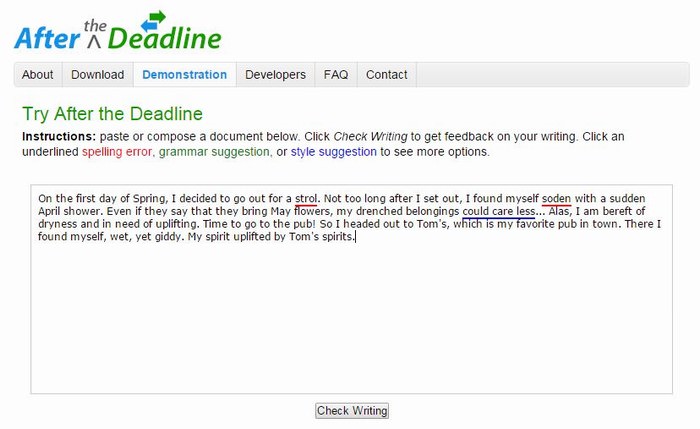Issue #36, Spring 2015
The Coming China Crisis
Rapid private-debt growth threw Japan into crisis in 1991 and did the same to the United States and Europe in 2008. China may be next.
Richard Vague
On the morning of September 8, 2016, the Wenzhou Credit Trust, one of the many trust companies in China, went into default. The firm discontinued all new lending and suspended redemption and interest payments on its trust certificates, the equivalent of deposits made by its customers.
At the time, the failure didn’t seem all that unusual. A handful of trust companies—“shadow lenders” that make loans, often the riskiest ones, outside of China’s conventional banks—had done the same in recent years. But within a week, another trust company went into default, and the following week, so did seven more. Angry trust-certificate holders protested in Wenzhou and Chongqing but were quelled by police. Those protests hardly seemed noteworthy at first—for years, there had been hundreds of protests and disturbances across China—but it turned out they presaged something new.
Within a month, more than 50 trust companies defaulted. The protests escalated and spread throughout the country. In the panic, new real-estate lending plummeted, putting more downward pressure on real-estate prices and hurting local economies. The Shanghai and Shenzhen stock markets plunged. The prices of iron, steel, coal, copper, aluminum, and other commodities—including oil—accelerated their downward spiral.
The government of China, which in recent years had tolerated these failures as part of its attempt to introduce more risk into the system, dramatically reversed course and intervened, injecting funds into these lenders and assuring customers that it would stand behind these institutions. This calmed equity markets, but commodity prices continued to sag and the renminbi fell, bringing the specter of devaluation.
By winter, the impact had shattered markets and companies throughout Asia and Australia, and markets were in retreat in Europe and the United States.
The Great Panic of China was in full swing.
The future, of course, doesn’t have to unfold this way. China, the world’s second-largest economy, could still act to prevent much of the above from happening.
But what cannot be changed is this: China, fueled by runaway lending, has produced far more housing, steel, iron, and a host of other goods than it knows what to do with, amassing unprecedented levels of overcapacity and, by my estimate, making a staggering $2-$3 trillion in problem loans in the process. And since GDP growth is more a measure of capacity being created than capacity actually needed, even China’s high rate of GDP growth, fueled almost entirely by continued ultra-high levels of lending growth, compounds rather than solves China’s fundamental overcapacity problem.
Which means that the global economic boost from China, the world’s only major growth engine since the crash of 2008 in the West, is rapidly diminishing and will soon largely end. The only question is how.
China’s bad-debt problem is unprecedented in scale, but not in nature. In the United States in 2007 and 2008, we saw our own economy crumble under the weight of bad debt. And the system didn’t know what hit it: On the eve of our own collapse, even though more than $1 trillion of bad mortgages had already been made and major financial fallout was inevitable, banks’ loan-loss provisions—the amount they set aside to cover bad loans—were near an all-time low, while consumer net worth and the stock market were at all-time highs.
Neither of the two dominant economic theories of our time forecast the coming storm. The doves—those more in favor of lower interest rates and government stimulus—were sanguine, unconcerned by rapid loan growth. The hawks—those more focused on curbing the money-supply expansion through higher interest rates—were sounding dire warnings of inflation. Both were wrong, but neither has since changed its theory.
Our 2007-08 meltdown was entirely foreseeable, despite claims to the contrary. It was not a “black swan” event. Examining the historical record leads to the conclusion that major financial crises can be anticipated so long as you’re on the lookout for the red flag of rapidly rising levels of private debt. If we are to avoid repeating history, we would do well to observe the Chinese predicament, understand its implications for the global economy, and apply lessons to our own economy.
Our Private-Debt Problem
The ongoing debate in Washington over government debt misses the point. In the years leading up to the U.S. crisis, the remarkable fact was not an increase in the level of federal debt, but the explosion in the size of privatedebt relative to GDP, which rocketed from 120 percent of GDP in 1997 to 165 percent in 2007. By contrast, federal debt barely changed, declining from 63 percent of GDP to 62 percent during that same period. Private debt is the sum of consumer debt, including mortgages and business debt. In my view, a healthy private-debt ratio would be no more than 125 to 150 percent of GDP.

While many observers missed the signs, some saw that private debt was somehow key to the American crisis, since the rapid increase in home mortgages was widely discussed as a culprit. And a closer look at the historical data shows that this relationship between private data and financial busts appears to be universal: When we examine financial crises in other countries, we see that—even when these crises were attributed to other causes—private debt was the fundamental factor. Private debt can be good when overall levels in a country are low or moderate, and when, for example, it is used to finance projects whose income can repay that debt. The problems come when private-debt growth is too rapid or reaches levels that are too high.
That certainly was the case in Japan in the years before its 1991 financial crisis:

The chart shows a familiar picture. In the years before the crisis, Japan saw a major spike in private debt. And that’s the same picture we see in crisis after crisis.
As I’ve previously written, there is a formula to predicting these crises. A financial meltdown is probably on the horizon if the ratio of private debt to GDP rises by roughly 17 percent or more over the course of five years and exceeds 150 percent. That rise in private debt will likely fuel runaway growth before the crash (think the 1920s, or Japan’s boom in the 1980s). But those gains will be evanescent. Driven by private-debt growth, they’ll eventually give way to a financial crisis.
In past crises—1929, Japan in 1991, the United States in 2008—high government debt was not the culprit, since in each case the ratio of government debt to GDP was generally flat or declining. Nor did they correlate with any of the long list of other widely cited causes, including current account deficits and interest rates. (Rapidly rising government debt generally becomes an issue after a crisis, as tax revenue plummets and deficits rise, government “safety net” programs get higher use, and governments counteract declining private spending with higher government spending.)
Why does runaway growth in private debt lead to financial crisis? First, because it means that far too much of something has been built or produced. It was primarily housing in the United States in 2008; in Japan in 1991, it was primarily commercial real estate. And second, because it means far too many bad loans have been made in the process. By 2007, for example, the U.S. banking system had roughly $1.5 trillion in total capital, but an estimated $2.5 trillion in problem loans.
If too much capacity and too many bad loans are the problems, the solutions are time and capital: time for organic growth to absorb the excess capacity, and capital to repair banks and borrowers. Monetary and fiscal policies might soften the blow, but since they do not address those two fundamental issues, they cannot solve the underlying problem.
The Potential for Crisis in China
The problem for China in 2015 is that it looks a lot like the United States in 2008 or Japan in 1991.

The growth in the ratio of private debt to GDP over the last five years is an astonishing 60 percent, and that ratio now exceeds 200 percent. China’s runaway debt growth has primarily been in business loans, and now its total business loans are greater than in the United States, even though, based on exchange rate, U.S. GDP is 82 percent larger than China’s. (For China, we use the term “private debt” for the sum of business and consumer debt, though some analysts refer to it as “non-government debt.”)
Quite simply, China has produced and built far too much capacity, through overinvestment in steel and cement firms and in accelerated housing development. In the process, it has amassed the largest buildup of bad debt in history.
The cause of the accelerated rise in private debt starting in 2008 was the collapse of the export market that had fueled China’s growth to that point. From 1999 to 2006, China’s exports-to-GDP ratio had exploded by 95 percent. China’s net exports, as measured in dollars, were the highest in recorded history. But they were growing on the shaky foundation of the debt-fueled expansion of the West that led to the crash of 2008. When that demand evaporated, China’s exports evaporated too. Addicted to its rapid expansion, China built a lot of real estate and produced lots of goods—both unjustified by actual demand—to fill the export hole, all financed by an unprecedented rise in private debt that is almost certain never to be fully repaid.
As a result, China is now sitting on top of the greatest accumulation of bad debt and overcapacity in history. According to the Survey and Research Center for China Household Finance, more than one in five homes in China’s urban areas is vacant, with 49 million sold but vacant units, and 3.5 million homes that remain unsold. Behind those vacant and unsold units is private debt, both loans to developers and mortgage debt. Housing values in China increased on the same perilous trajectory as in the United States before 2008 and Japan before 1991—and they have now started a similar decline. Meanwhile, real estate was 6 percent of U.S. GDP at the peak in 2005; today, it is as much as 20 percent of China’s GDP.
There are other red flags. China produced 8 percent of the world’s furnace iron in 1980; it now produces 61 percent, even though the rest of the world still continues to produce every bit as much as it has in the past. As China’s iron production accelerated in the period from 2002 to 2011, iron prices increased twelvefold in response to debt-fueled demand. (Increases in debtcause increases in prices.) But now that iron capacity has piled up beyond need, prices have tumbled by over 50 percent, and the excess capacity is so great that even the demand generated by rapid credit growth can no longer prop prices up. Also, China used more cement in the period from 2011 to 2013 (6.6 gigatons) than the United States did in the entire twentieth century (4.5 gigatons).
These are but a few of many examples. Researchers at a Chinese state planning agency said recently that China has “wasted” $6.8 trillion in investment. Overcapacity is so significant in many sectors that it will take years for it to be absorbed by organic demand. Ironically, this problem is compounded by China’s own continued high growth rates, since high GDP growth is a measure of the creation of additional capacity even if that capacity is not needed.
Good and sound loans, by definition, result in commensurate GDP growth. So when private-loan growth outstrips GDP growth, much of that excess—from one-quarter to one-half, based on evidence from other crises—will be problem loans. Based on this formula, China today is likely to have an estimated $1.75 trillion to $3.5 trillion in problem loans—a figure well in excess of the $1.5 trillion of total capital in China’s banking system.
Of course, China’s banks and shadow lenders are not reporting bad loans close to this amount. But neither did U.S. banks: On the eve of the U.S. crisis, banks were making loan-loss provisions at very low levels. Lending booms create the false appearance of prosperity, and fraud and corruption can make the picture even prettier.
Some dismiss these warning signs, noting that many economic prophets wrongly made the same dire predictions for China during the late 1990s. But there’s a big difference: In 1999, China’s overall level of private debt was 111 percent of GDP; today, it’s almost double that, at 211 percent. In 1999, it had plenty of room to power growth through continued private-debt expansion, and the debt boom in the West fueled unprecedented export demand. The opposite is true today.
China’s Future—and the World’s
China’s slowdown is already underway. Nominal GDP growth has already slowed from over 15 percent in 2011 to around 7 percent in the last year—and some analysts believe it’s actually closer to 4 percent. The decline will continue to play out, perhaps dramatically, over the next three to four years. How well or badly it plays out, however, depends on the approach the government takes to simultaneously managing both the short-term problem (slowing growth) and the longer-term problem (the overhang of private debt).
The trouble for China is that these two challenges summon conflicting responses. GDP growth in any economy is largely dependent on private-credit growth, yet the Chinese private sector is massively overleveraged. Ramping up credit might reverse the slowdown but will further increase bad debt and compound the ultimate problem; reining in debt, on the other hand, would help the debt problem but slow down growth.
True, China’s economy is largely a closed system that can make—and suspend—its own rules, which means China’s leaders can prop up their lending system for a time. (Even Japan was able to prop up its banks for several years after its stock market collapse.) What they can likely no longer do, however, is effectively prop up real estate and commodity prices. Over time, because the decline in real estate and commodity prices is evidence of China’s overcapacity and those assets are collateral for so much debt, it will be China’s Achilles’ heel.










+Daily.pdf.png)
2+Daily.pdf.png)
+Daily.pdf.png)






+Daily.pdf.png)
2+Daily.pdf.png)

























